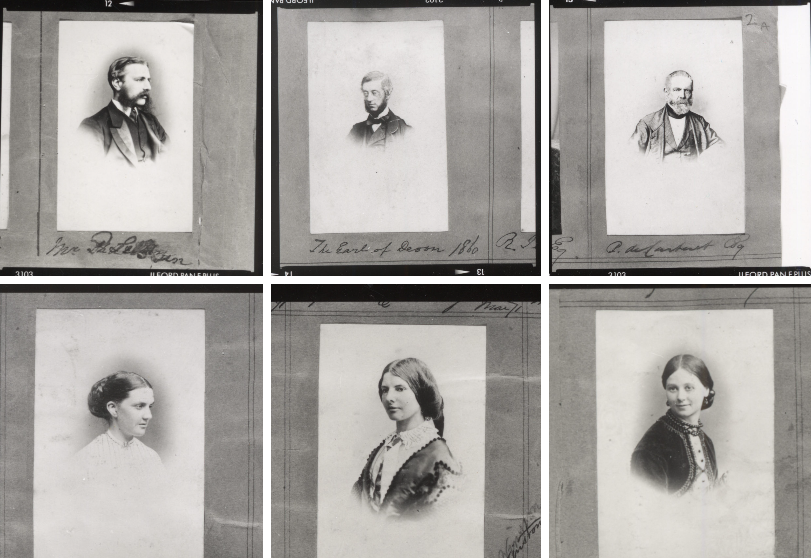enry Mullins started working at 230 Regent Street in London in the 1840s and moved to Jersey in July 1848, setting up a studio known as the Royal Saloon, at 7 Royal Square. Initially he was in partnership with a Mr Millward, about whom very little is known. By the following year he was working alone and he continued to work out of the same studio for another 26 years.
For a brief period in the 1860s he also worked in London, but judging by the collection of his photographs which is now held by La Société Jersiaise, he found plenty of willing sitters in the island prepared to pay half a guinea (promoted as “one half of that in London”) to have their portrait taken by him.
Diamond Cameo:


The patent diamond cameo photo was taken by F.R. Registered. London windows of 1864. On a diamond-shaped business card he arranged four small oval portraits, each portrait of the same person taken in a different position. A special Dallmeyer camera is used, and each time he takes a portrait he takes one piece of glass. His negative is moved to a new position on the back of the camera, and after gluing the paper print onto the card, a special press is used. and made a hole. The four portraits together form a convex cameo shape.
Henry Mullin’s famous images:



His speciality was cartes de visite and the photographic archive of La Société contains a massive collection of these. Their on line archive contains 9600 images, but the majority of these are sets of up to 16 photographs taken at a single sitting. In those times even 10s 6d was a substantial sum to pay to have one’s photograph taken, and included among his subjects are many of the island’s affluent and influential people, including Dean Le Breton, the father of Lillie Langtry.
He was also popular with officers of the Royal Militia Island of Jersey, for whom it was very popular to have portraits taken, as well as of their wives and children, for the more senior and more affluent officers. The pictures of these officers show clearly the fashion for long hair, whiskers and beards in the mid-1800s. Indeed, so similar is their appearance and so stylised the portraits, it is very hard to detect much difference between a large number of officers of the same rank and social standing.

Jess, you have researched the wrong Mullins (Canadian), here is a link to photographer Henry Mullins in Jersey.
https://www.theislandwiki.org/index.php/Henry_Mullins
You also need to describe his working methods using carte-de-visite and albumen printing technique.
Read our blog with links to appropriate resources here
https://hautlieucreative.co.uk/photo25al/2023/11/24/headshots-jac/
Jess, there is no evidence of any blog posts yet from Femininity / Masculinity project!
In preparation for Mock Exam on Wednesday 24 Jan, make sure you complete and publish following missing blog posts:
1. Artists Case Studies x 2
2. Photoshoots + image selection and adjustments x 2
3. Show experimentation with images in LR or Photoshop etc